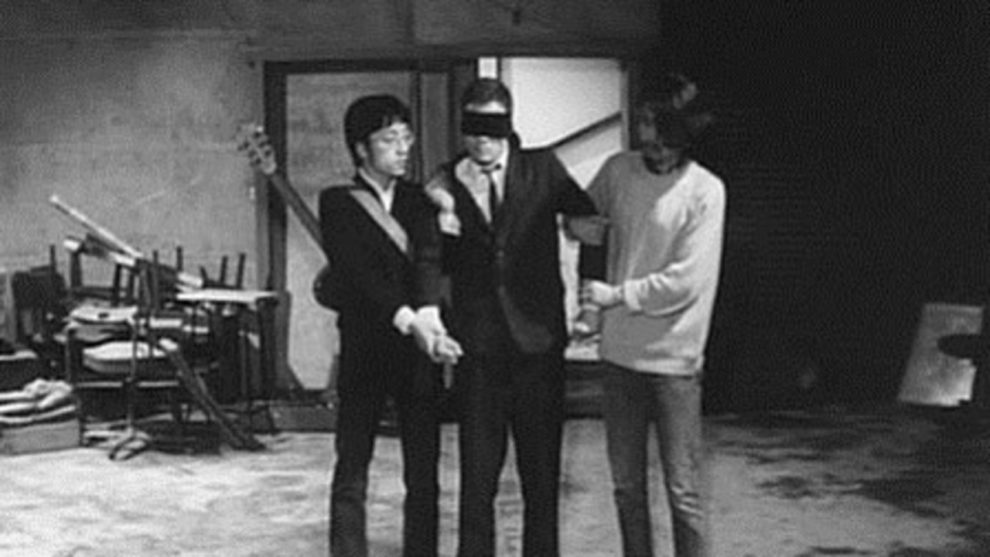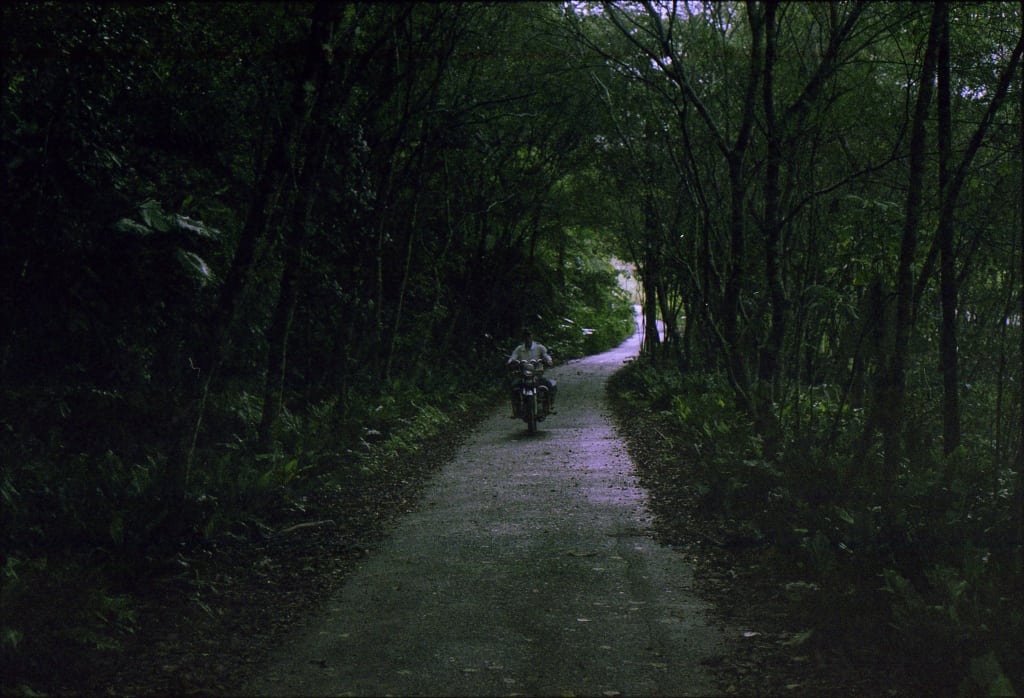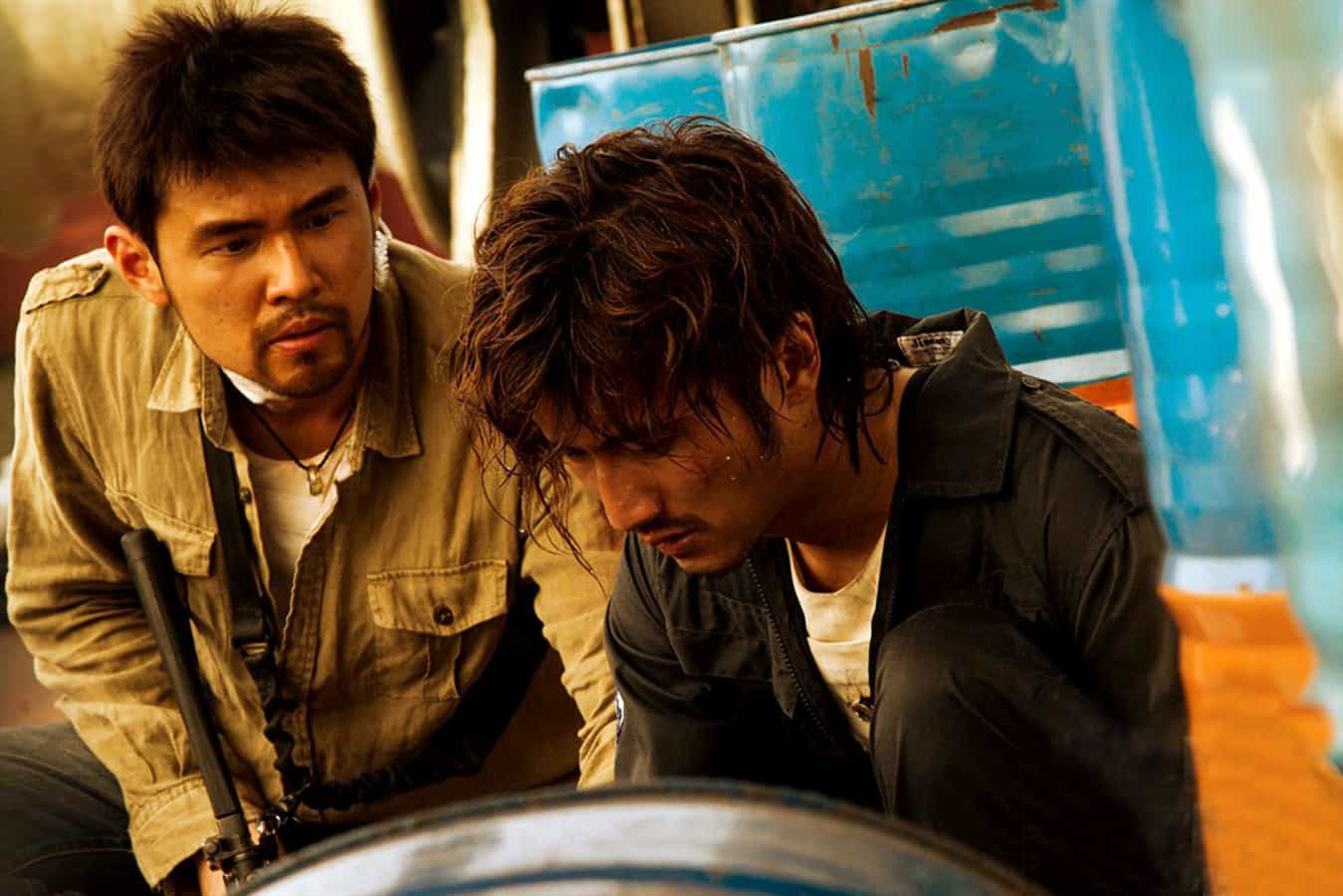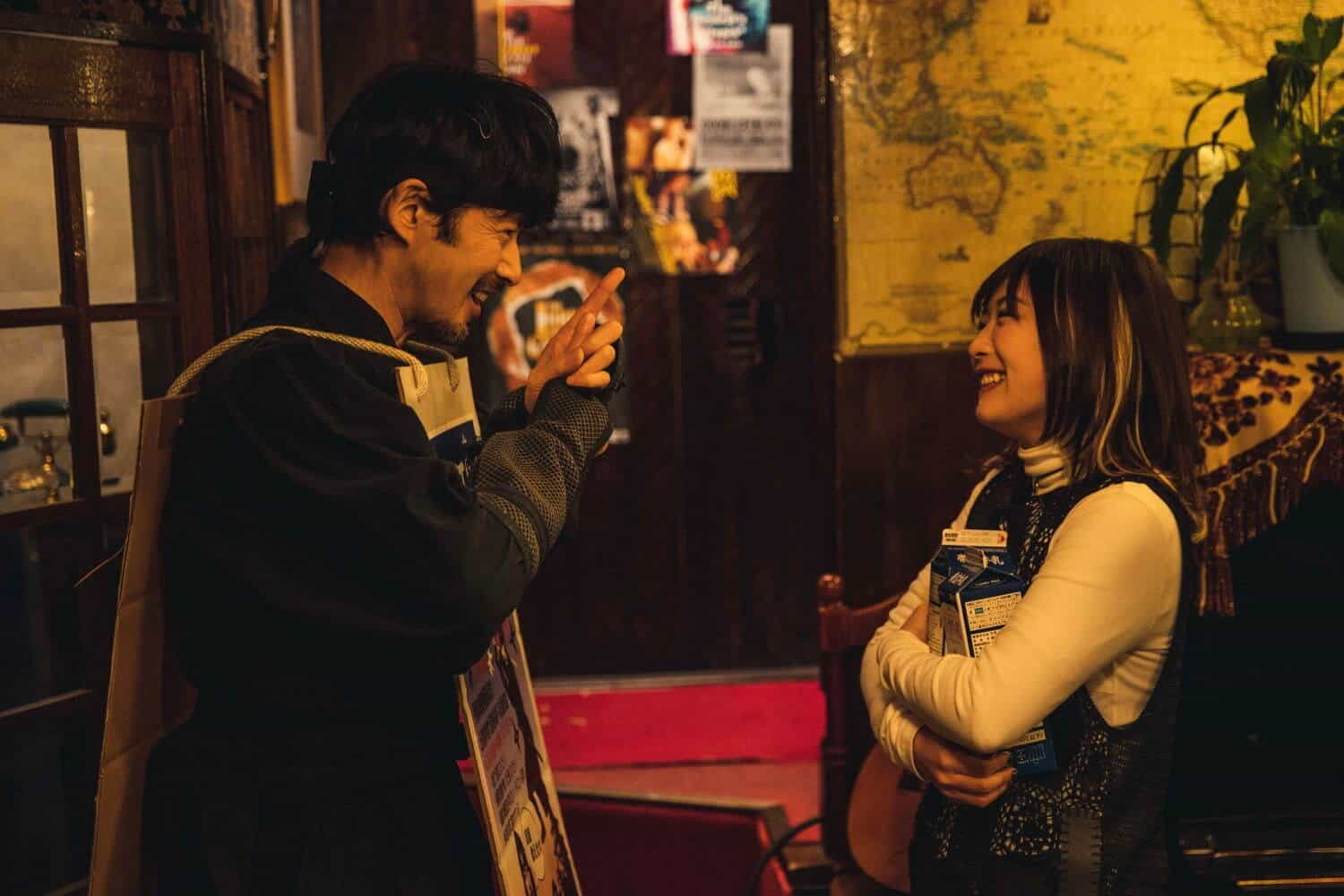By the 70's, and through his own production company, Wakamatsu Pro, Koji Wakamatsu had managed to move pretty far away from his pinku past, with his movies screening at university campuses and Theatre Scorpio, attracting a more youthful and intellectual audience, who were looking for much more than titillation. Wakamatsu, always the great “promoter”, realized this change in his audience, and proceeded on making films that were more political, and also captured the interest of his new audience, with “Shinjuku Mad”, which takes place in one of the most vibrant with youthfulness areas of Tokyo, being a great example of this turn.
The film begins with two members of a theatre group being assaulted by a group of unknown thugs, who kill the man, and then strip the woman bare and paint her naked body with his blood, in a scene that strays away from the rest of the movie, not only because it is in color, but also because it is the only one so strongly pointing to Roman Porno. The setting then changes to outside of a police station, where the two detectives who are tasked with investigating the crime highlight their indifference and their unwillingness to really put the work. The result is that the desperate father of the deceased decides to investigate by himself, which brings him into meeting all the “tribes” that frequented Shinjuku at the time, including delinquents, hippies, student radicals, yakuza, gang members, and the girl that was assaulted in the beginning of the film. Eventually, the Father learns that the perpetrator is someone called Shinjuku Mad, although who or what that is remains unknown until the rather brutal ending, which brings him against a gang comprising of rather diverse, but equally cruel and violent members.
Scripted, as usually, by Masao Adachi, the film functions much like a tour guide to the underbelly, non-tourist part of the area, with Wakamatsu highlighting the cultural explosion but also the lawlessness that ruled Shinjuku at the time. In that last regard, the movie presents a rather harsh critique of the police, whose members appear as totally useless, essentially just harassing the father for his search, instead of actually investigating the crime.

The whodunit aspect does exist, but the narrative soon transforms into an odyssey of a desperate man, whose search for the reasons behind his son's death and the punishment he receives during that search, both psychologically and physically, essentially turning him into the real Shinjuku Mad. Regarding the first kind of violence, his interaction with the victim is probably the most harsh “slap” he receives when she reveals to him what had actually happened, making him regret his treatment of her up to that point. The metastrophe he exhibits after her confession is the apogee of an overall impressive performance by Toshiyuki Hanigawa, who anchors the film in the best way, in a rather demanding performance that has him in constant tension and quite frequently beaten. The fact that he does not know almost anything about his son, and the overall lack of parenting and, in general, of his generation, in the story, could also be perceived a comment on the demise of the concept of family and an accusation towards the father's generation, who were busy making money, forgetting their children in the process.
The sex and nudity part is not missing completely, and Wakamatsu uses the hippies to present at least one intense scene of sex inside some cemented tubes where two men and two women indulge their basic instincts, after finishing singing “Hare Krishna”. That the father also joins them to ask for his son emerges as the trademark style of humor Adachi and Wakamatsu implemented in their collaborations, while that a girl utters, “I have slept with many people. I am not sure about him”, highlights the mentality of the particular tribe in the best fashion.
Hideo Ito's cinematography implements an approach that occasionally follows the rules of the documentary/tour guide and occasionally of fiction, with the distance of the camera providing the dichotomy between the two. A number of rather interesting shots are not missing from here also, with the aforementioned tube scene and the introductory sequence being two of the highlights. Isamu Nakajima's editing implements the rapid pace of the area quite nicely, in another, almost frantic effort by Wakamatsu to fit everything he and Adachi wanted to say in the 65 minutes of its direction.
“Shinjuku Mad”, one of the director's favorites among his films, emerges as one of his best works, particularly through its combination of sociopolitical and philosophical commentary, exploration of Shinjuku, and exploitation aesthetics.
















